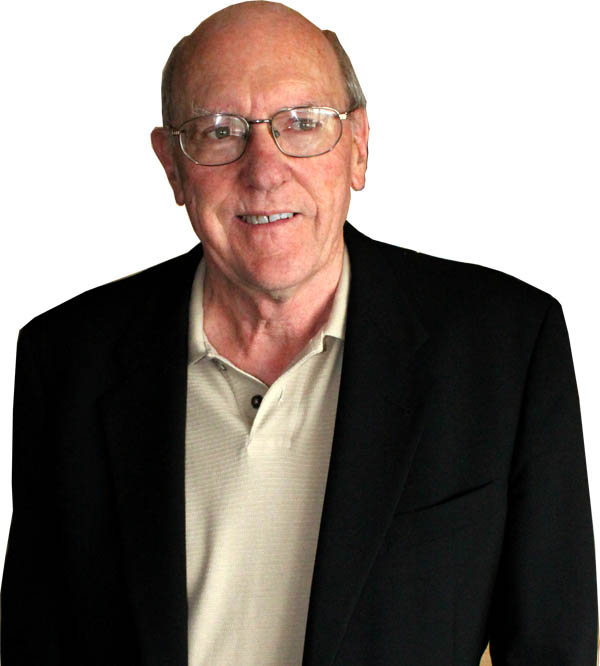As I began writing about fresh starts and the New Year, I thought about how life changed significantly for me 30 years ago. With two babies and a regular commute to New York City for my job in the computer graphics industry, I dreamed of starting my own business. This month marks my 30th anniversary of launching Oh, So Organized!
When I was a young mom juggling work, family life, and two young kids, I recognized that my organizational abilities helped me navigate life with less stress. Other moms often asked, “How are you managing everything?” While I was ‘born organized,’ I realized organizing was a teachable skill I could share with other parents.
After much deliberation, I left my computer graphics career and combined my visual arts expertise, business background, love of helping people, and organizing abilities to launch Oh, So Organized! It was a risky decision, yet I’m happy I took it.
Taking Risks
I’m reminded of a story one of my clients shared about taking risks. Especially if you’re thinking about change as you enter this new year, I hope you find encouragement in this story.
When lobsters grow to be about one pound, they instinctively know they are facing a crisis. They have lived in a shell that protects them but inhibits their growth.
To mature, the lobsters must shed their old shells and grow new ones, which takes about two days. This isn’t long, but they are left naked and vulnerable during that time.
Other sea creatures may eat the naked lobster, or waves may slam it against a rock and damage it. Yet there is no alternative. The lobster must endure two days of risk to grow a new shell and become mature.
Humans often have to do that too.
Celebrating 30 Years
I had no idea what an amazing journey I would have when I left the security of a job with medical benefits and a steady paycheck. Talk about shedding my old shell to grow a new one. Wow! In these past three decades, I’ve continued to shed and grow. Each transition and change I was willing to make opened doors for new experiences, clients, learning, growth, and opportunities.
I remember when being in business meant you needed at least a business card, phone, and fax number. That morphed into adding an email address. After that, having a website was a cornerstone of any business. My first website was launched in 2001 and was redesigned several times, with the most recent revamp in 2020.
The business has several aspects to it. There is the business of running a business, organizing work with clients, and being a participant, resource, and volunteer in the organizing industry. In each of these areas, I experienced tremendous opportunities for growth, learning, and giving. There are too many highlights to include (or remember,) but here are several:
1993- Gave my first newspaper interview in December 1993, which connected me with new clients for years and taught me the value of PR. Since then, I’ve been featured in The New York Times, Wall Street Journal, HuffPost, Westchester Magazine, and many more media outlets.
1994- Wrote and mailed out my first ‘snail mail’ quarterly newsletter, which I still send to a selective group.
1995- Presented at the National Association of Professional Organizers (NAPO) conference in Dallas, met industry expert and thought leader Judith Kolberg, and learned about chronic disorganization.
1999- Asked to launch and lead the NAPO-NY area Golden Circle group for veteran organizers, which I ran for 8 years.
2002-2021- Was featured in several books about professional organizing, including Organizing Plain & Simple by Donna Smallin, The ICD Guide to Challenging Disorganization for Professional Organizers edited by Kate Varness, Junk – Digging Through America’s Love Affair With Stuff by Alison Stewart, and, I’m Right Here – 10 Ways to Get Help for Hoarding and Chronic Disorganization by Jill B. Yesko.
2006- Became Westchester’s first Certified Professional Organizer in Chronic Disorganization (CPO-CD®) after three years of training and study through the Institute for Challenging Disorganization (ICD).
2008- Became an ICD Program Mentor. Since then, I’ve mentored many students through a credentialing process to get their CPO-CD® certification.
2009- Became an ICD Master Trainer, a credential held by less than 12 professionals in the organizing industry.
“Let your past experiences fuel your fresh start.”
2010- Wrote and published my book The Other Side of Organized – Finding Balance Between Chaos and Perfection.
2010- Launched my blog, The Other Side of Organized, and started blogging about organizing and life balance. I have written almost 500 posts to date.
2013- Completed the foundation courses through Coach Approach for Organizers.
2014-2016- Was President of the Institute for Challenging Disorganization (ICD).
2014-2020- Was interviewed for many Smead podcasts by host John Hunt.
2014- Presented at the Japan Association of Life Organizers (JALO) conference in Yokohama, Japan.
2019- Was interviewed on several of WNYC’s “All Of It” shows by host Alison Stewart.
2020- Became a Certified Virtual Professional Organizer (CVOP™) and pivoted my business to working with clients worldwide.
2020- Joined The Nest by Revel, an Executive Coaching company, as their Professional Organizer Advisor.
2022- Presented at the International Virtual Organizers Summit for Virtual Organizers.
2022- Hosted my first Oh, So Organized! virtual workshop on “How to Conquer Clutter.”
2023- These past 30 years, I’ve been joyfully working with hundreds of clients in-person and virtually. I’ve presented at various public and private conferences and events, attended dozens of conferences, taken hundreds of classes, and volunteered in the organizing industry locally, nationally, and internationally for an array of short to long-term projects.
Gratitude & Fresh Starts
None of this would have been possible without the love, support, guidance, and trust of my family, friends, clients, colleagues, mentors, teachers, and guides. While 30 years is a milestone, it’s not an end. It’s the beginning of this year and many more to come.
My deepest gratitude to all the incredible people I’ve developed relationships with and met along the way. To my clients, I thank you for your ongoing trust in allowing me into your lives and being part of your organizing journey. I love helping and supporting you. To my colleagues, I am grateful for your wisdom, generosity, friendship, and guidance. To my family and friends, your ongoing encouragement, support, and love has helped me grow and thrive. I wouldn’t be here without all of you.
How will you make the most of your fresh start as you dive into this New Year? What are you excited about? What will you let go of? Where do you want to give your time and attention? I’d love to hear your thoughts. I invite you to join the conversation.









